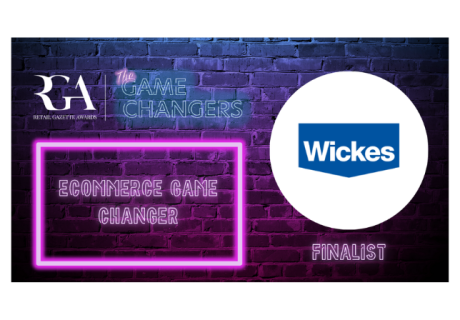As another academic year rolls into view, is your DTC site going to be top of the class? Or will it be a case of ‘must try harder’?
Introduction: Why Focus on DTC?
In the retail fallout of the COVID-19 pandemic, an intense fire was lit under the world of Ecommerce. Consumers turned to the web to buy goods, and many companies grasped at the opportunity of launching a Direct-To-Consumer (DTC) site. The opportunities for first party data, chances to test NPD, and revenue generation are vast. But in the rush to get sites created, some sites are still missing crucial features that make the consumer shopping experience smooth, engaging and enjoyable.
The following 4 features may seem basic. But without them, sites can appear sluggish and unfriendly, whilst ultimately reducing the chance that a browsing individual will become a paying customer.
1) Have a Search Function
Search may seem like a no-brainer. It’s taken for granted by consumers all over the world, but many sites still don’t offer this basic functionality. 43% of users [1] on retail websites admit that the first thing that they do is to go directly to the search bar. Plus, consumers who search at any point in their online shopping journey are 2.4 times more likely to make a purchase [2]. Need any more convincing? How about this: searchers also create more revenue for your DTC site, as they spend 2.6 times more across mobile and desktop than consumers who don’t use search.
It’s therefore crucial to have some kind of search functionality on your website, and make sure that items are properly indexed so that they appear in search results. But, simply offering a search option isn’t enough. Having an autocomplete plugin for your search can boost sales and conversions by up to 24% [3]. However, ensuring that consumers see something rather than nothing when experiencing a fruitless search is crucial. 21% of consumers exit sites after their first search [4]. If they can’t find exactly what they’re looking for, show them something that they still might be interested in.
2) ‘Best Sellers’ Category
You know your products. You know what sells well, what doesn’t and what could do better. First-time customers don’t. Users can be easily overwhelmed by Ecommerce sites with plenty of products and no logical way to browse them. This is particularly true for younger DTC brands that users are less likely to have previously engaged with. When visiting a website for the first time, users often need an overview of the available product range as well as additional guidance towards where to begin exploring and which products will be the most promising.
During testing by Baymard[5], it was noted that creating and promoting a “Best Sellers” category create an essential path to finding relevant products. It was a critical entry point to begin exploring the site further. 23% of users testing DTC sites that offered a “Best Sellers” category used it, often as their first navigational choice from the homepage. Use this to your advantage and show off the products that are most likely to lead to a conversion.
3) Flexible Payment Options
Understandably, the mass increase in online shopping has led to do a considerable surge in digital payment methods. Old staple methods like credit cards are still crucial, but the past two years have seen digital wallets, cryptocurrency and a new breed of lending services rocket in popularity. Predictions in an eMarketer report show that whilst the younger generation have long embraced digital payments, older buyers are beginning to adopt them too. They anticipate a 5.8% increase in digital buyers 45 and older[6] within the next two years.
Uncertain economic conditions, and the current cost-Of-living crisis has also led to a surge in popularity of non-traditional lenders. Services such as Afterpay, Klarna, and Affirm are becoming household names, and are an extremely popular payment method, particularly amongst Millennial and Gen Z consumers. Since making its debut in the U.K in 2015, Klarna is now the leading global payments and shopping service. It offers flexible ways for consumers to shop[7] and currently has 90 million active consumers, through more than 250,000 merchants, in 17 countries.
Flexible payment options such as Klarna give customers the opportunity to budget their purchases, and increase the likelihood of them completing a purchase. Buy now, pay later options decrease cart abandonment, and increase total order size. That’s a win for your DTC site, and a win for your customers[8].
4) Personalised Recommendations
There was a time when personalisation was a ‘nice to have’ feature. But we’ve long since moved past that phase. A huge 91% of consumers[9] consider themselves more likely to purchase from sites that offer personalised product recommendations and offers. To keep consumers engaged, they need to be shown products that they are likely to be interested in.
DTC sites offer brands a wealth of first-party data. Combine this with one of the many AI-Based Ecom Apps that display similar products, frequently bought together items, and what other consumers are buying can have a considerable impact on likelihood to purchase, and ultimately Average Order Value (AOV).
Conclusion
With these in mind, what will your end of year report look like? We can’t all be A* students, but we can tick every box to become the teacher’s pet.
Does your DTC site need creating? Launching? Maintaining? A total overhaul? We can help. For the last three years, we have helped to develop Heinz-to-Home which has become a successful NPD, PR and DTC channel for Kraft Heinz.
If you want to discuss working with us, you contact us here.
[1] https://www.forrester.com/report/MustHave-eCommerce-Features/RES89561 [2] https://www.salesforce.com/content/blogs/us/en/2017/10/einstein-search-for-commerce.html#:~:text=Einstein%20is%20a%20set%20of,and%20turn%20it%20into%20value. [3] https://www.spyfu.com/blog/increased-conversions-autocomplete/ [4] https://econsultancy.com/is-site-search-less-important-for-niche-retailers/#i.e6bb0iahterern [5] https://baymard.com/blog/dtc-benchmark [6] https://www.insiderintelligence.com/content/expect-7-4-million-new-digital-buyers-2020-pandemic-alters-behaviors [7] klarna.com/uk/about-us/ [8] https://www.fool.com/the-ascent/research/buy-now-pay-later-statistics/ [9] https://www.accenture.com/_acnmedia/PDF-77/Accenture-Pulse-Survey.pdf




